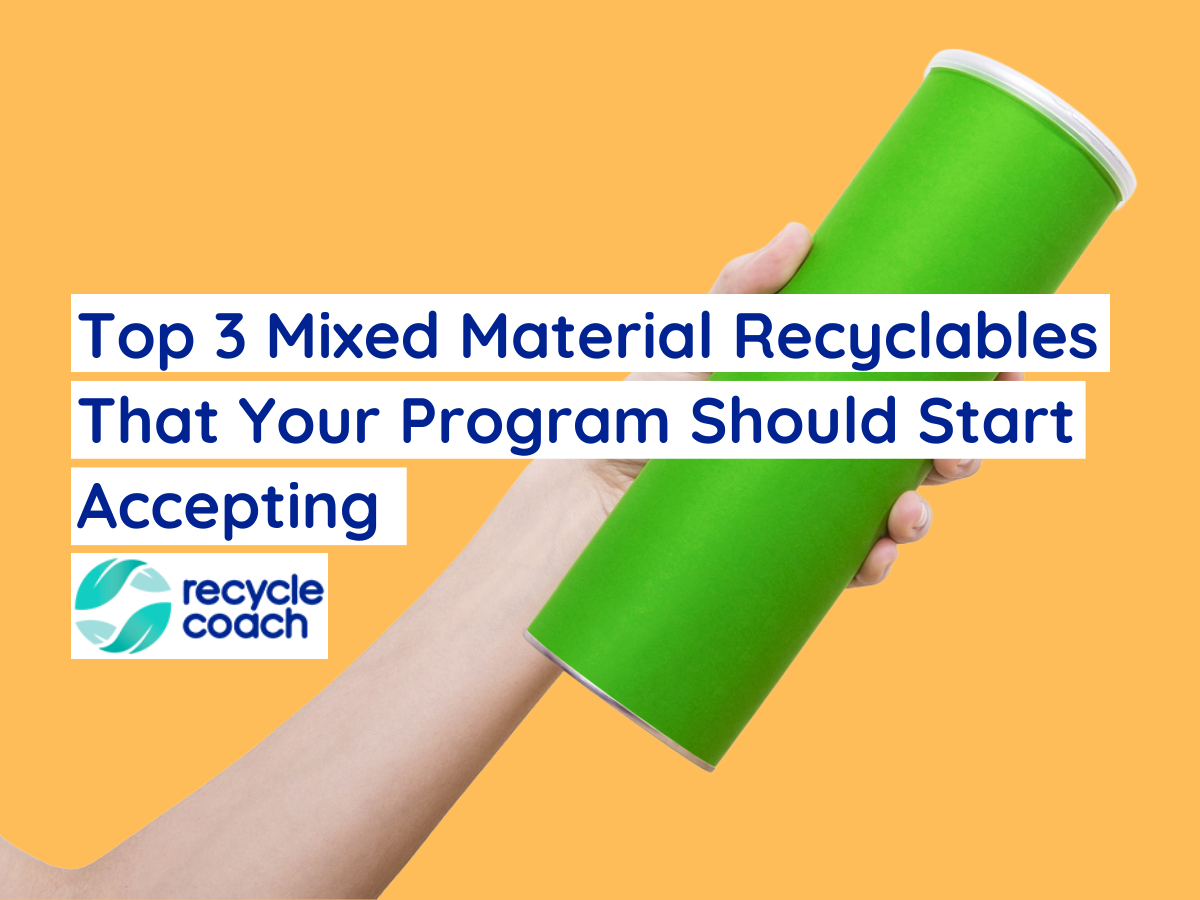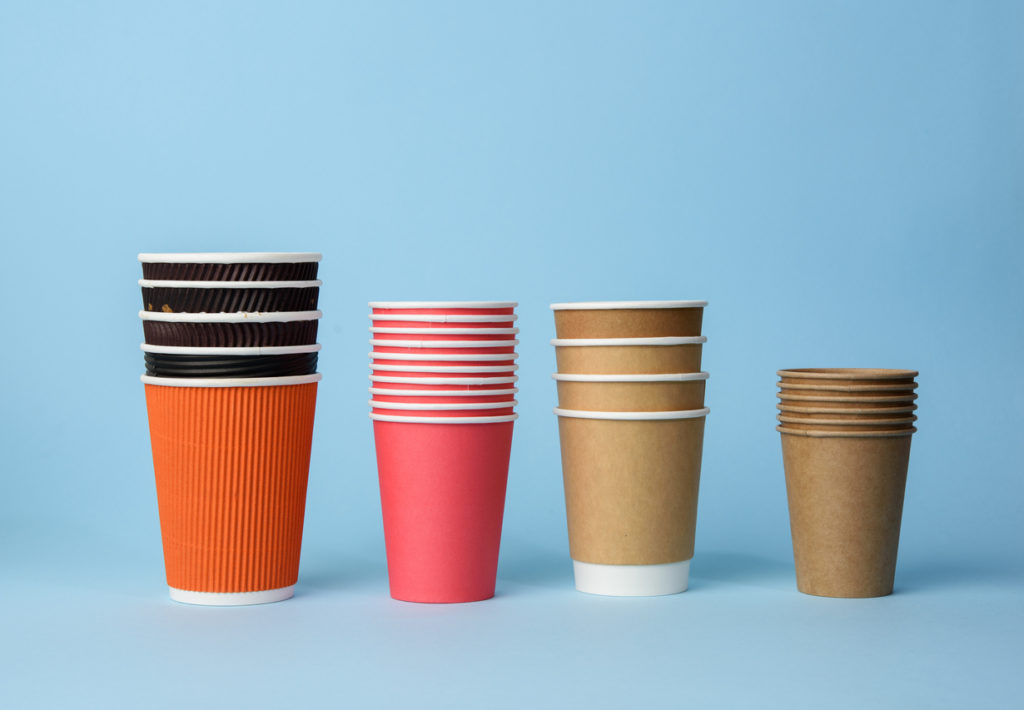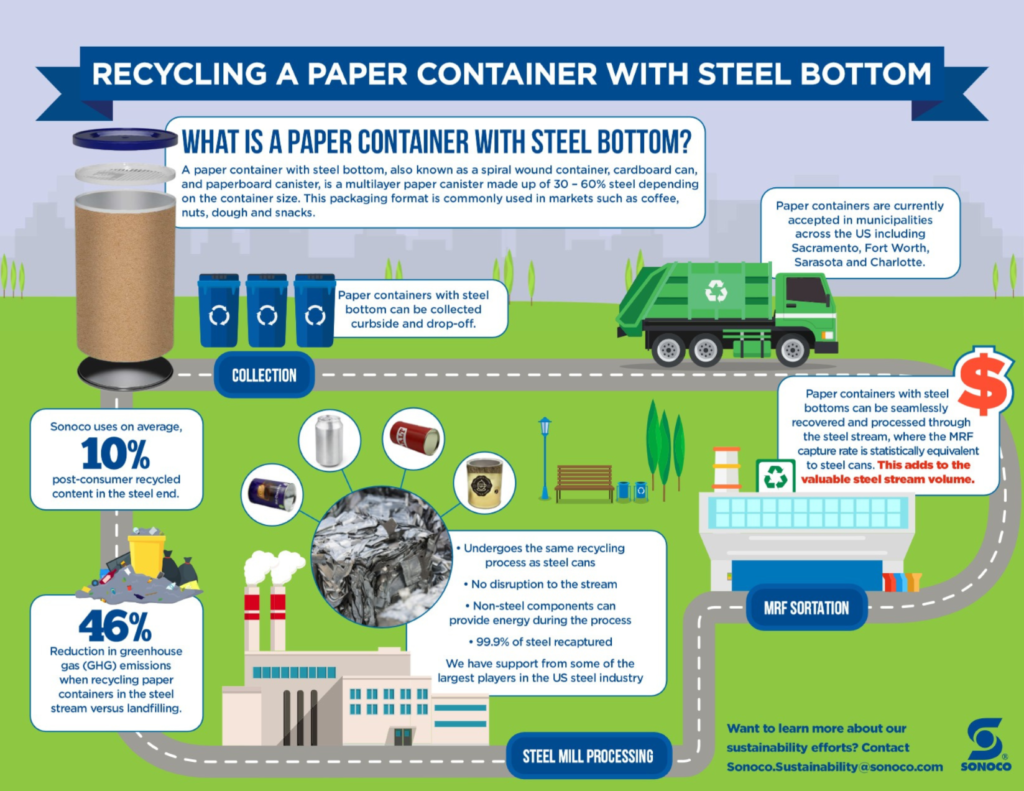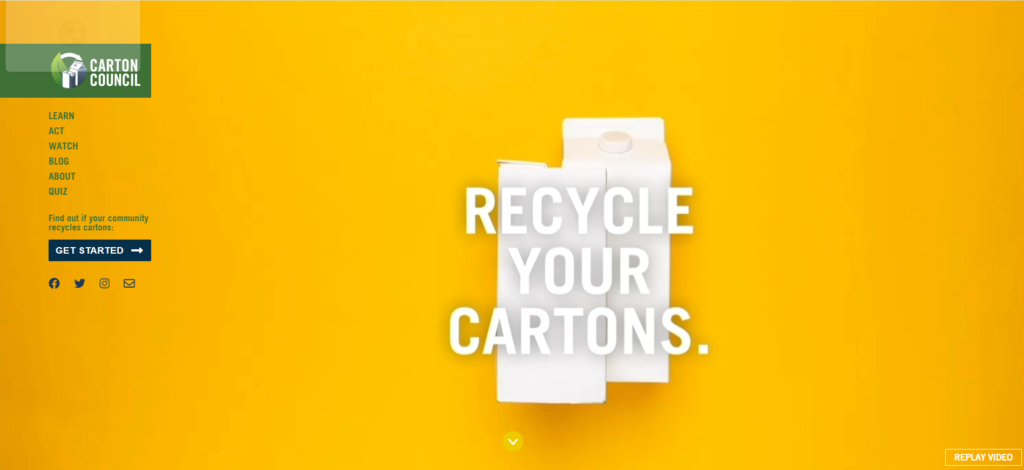Top 3 Mixed Material Recyclables That Your Program Should Start Accepting

Disclosure: This post is sponsored by Sonoco.
The issue of mixed material recyclables has been a constant headache for many municipal recycling programs. Mixed materials are items that contain more than one material, traditionally making them difficult to recycle. For example, if a mixed paper recycling item is part paper and part plastic, but ends up being separated into the sorted paper, the plastic will contaminate the paper load.
In most locations mixed material recyclables are on the not accepted list because many MRFs (Material Recover Facilities) don’t have the equipment needed to deal with them. The recycling of mixed materials is long overdue for some industry improvements. Luckily, right now there is a renaissance of new recycling technologies being developed that could help your MRF accept more items.
After the 2018 China ban on accepting many foreign recycling imports, and in the aftermath of the COVID-19 pandemic, there have been many changes to the waste and recycling industry in recent years. One effect that has been seen is the increase in producer responsibility and attempts at product sustainability.
As manufacturers attempt to improve the recyclability of their products, recycling facilities have been adopting new technologies to include more accepted materials in their sorting processes. With the push to recover more materials, mixed material recyclables need to be the next wave of accepted materials in your sorting facilities. Let’s explore these 3 highly used mixed materials you should start accepting in your program.
Coffee Cups

Paper coffee cups are a commonly unaccepted paper item at MRFs because they are plastic lined. More and more facilities are accepting these mixed paper recycling items as there is more understanding as to the process of recycling this mixed material item.
Some facilities use new high-consistency rotors, some shred the paper to remove the plastic easier, and some turn the paper into pulp to skim the plastic off the top.
Reasons your facility should start accepting coffee cups:
- Both the paper and the plastic lining can be recycled once separated, leaving no waste for your facility to deal with.
- There are likely funding opportunities available for you to increase your acceptance of paper coffee cups.
- In the US alone, 50 billion paper coffee cups are disposed of per year, meaning this is an area that recycling needs to start addressing in order to combat vast amounts of wasted paper and space taken up in landfills.
Cardboard Spiral Cans

Cardboard Spiral Cans are an often-misunderstood recyclable. Companies like Sonoco, who produces these types of paper containers with steel bottoms, have designed this packaging with a closed loop system in mind. Unfortunately, many MRFs still do not accept this material for recycling since it is a mixed material.
This type of mixed paper recyclable material includes items such as potato chip cans, dough containers, frozen juice canisters, and some household cleansers.
To recycle this properly, residents should remove the plastic lid and any film or removable lidding that the package has. The remainder of the container can be placed in in the recycling bin to be sorted with steel.
Reasons your facility should start accepting Cardboard Spiral Cans cartons:
- These containers will easily be sorted on your existing line by magnets together with other steel and metal recyclables, meaning no additional investment is needed in your equipment.
- The non-steel components are consumed and recovered as energy during the steel recycling process, causing no disruptions or contamination concerns (The paper portion of the container makes up less than 1.5% of the overall steel bale weight).
- There is a 46% decrease in greenhouse gasses when you recycle the paper container with steel ends instead of sending these items to landfills.
- In an effort to increase sustainability, Sonoco Products Company has ensured that they have support from several of the largest end markets in the North American steel industry that accept this mixed material recyclable.
- The capture rate of these cardboard spiral cans with steel bottoms is equal to the capture rate of steel cans, adding to the volume of your steel stream.
Tetra Pak Cartons

Aseptic and gable top cartons can consist of plastic, aluminum, and paper in order to keep liquid foods fresh. This includes many milk, juice, stock, and wine cartons. Recycling this type of mixed material packaging may seem daunting, but with 75% of the contents made from paperboard, it is a valuable source of paper that your MRF could be recovering.
Reasons your facility should start accepting aseptic and gable top cartons:
- When turned to paper pulp, the resulting fibers can be used in new tissue, toilet paper, and office paper products at a paper mill.
- These cartons can either be recycled with a hydrapulper to extract the paper, or the contents could be shredded and pressed into durable building materials.
- Aseptic and Gable Top Cartons can utilize innovations such as robotic and AI sorting technologies in MRFs to increase recyclability.
Make An Impact
In the wake of so many industry changes and advancements, it is time to start improving MRF capabilities. Recycling programs are potentially missing out on the opportunity to incorporate more recoverable materials just because they are commonly misunderstood.
With the increase in extended producer responsibilities, recycling centers have ample opportunity to accept more materials since manufactures are creating products and packaging in more sustainable ways to be recycled and close the loop for their products.
By adding these three mixed material recyclables to the accepted list at your recycling facility, you will be helping to improve your program and increase the viability of the circular economy.